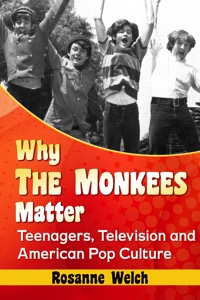Into a photography studio full of large fantastic machines steps an elderly couple. The bearded proprietor explains the equipment and gives them a demonstration and projects a painting of three women onto a large screen; suddenly the women begin to move. The customers are impressed. First the women sits in the special seat: she’s projected onto the screen, and her good nature comes out in the laughing image. Then it’s the man’s turn, but on the screen it projects a painted, apelike Friar Tuck face. The man gets angry and tries to wreck the machine getting an electric jolt in the process. – Silent Film House
* A portion of each sale from Amazon.com directly supports our blogs
** Many of these books may be available from your local library. Check it out!
I teach several classes for the Stephens College Low-Residency MFA in Screenwriting, including History of Screenwriting. In fact, I created the curriculum for that course from scratch and customized it to this particular MFA in that it covers ‘Screenwriting’ (not directors) and even more specifically, the class has a female-centric focus. As part History of Screenwriting I, the first course in the four-class series, we focus on the early women screenwriters of the silent film era who male historians have, for the most part, quietly forgotten in their books. In this series, I share with you some of the screenwriters and films that should be part of any screenwriters education. I believe that in order to become a great screenwriter, you need to understand the deep history of screenwriting and the amazing people who created the career. — Dr. Rosanne Welch

![13 : Michael Nesmith and The Monkees : “Why The Monkees Matter” Interview with Jean Power [Video] (0:35)](https://rosannewelch.com/wp-content/uploads/2017/07/rmw-power-13-nesmith.jpeg)


![Conclusion and Acknowledgements from Why The Monkees Matter Book Signing [Video] (1:48)](https://rosannewelch.com/wp-content/uploads/2017/07/wtmm-reading-16-conclusion.jpeg)

![12 : Women and The Monkees : “Why The Monkees Matter” Interview with Jean Power [Video] (1:04)](https://rosannewelch.com/wp-content/uploads/2017/07/rmw-power-12-women.jpeg)

![Personal Identity and The Monkees from Why The Monkees Matter Book Signing [Video] (0:37)](https://rosannewelch.com/wp-content/uploads/2017/07/wtmm-reading-15-identity.jpeg)
![11 : Feminism and The Monkees : “Why The Monkees Matter” Interview with Jean Power [Video] (0:53)](https://rosannewelch.com/wp-content/uploads/2017/07/rmw-power-11-feminism.jpeg)
